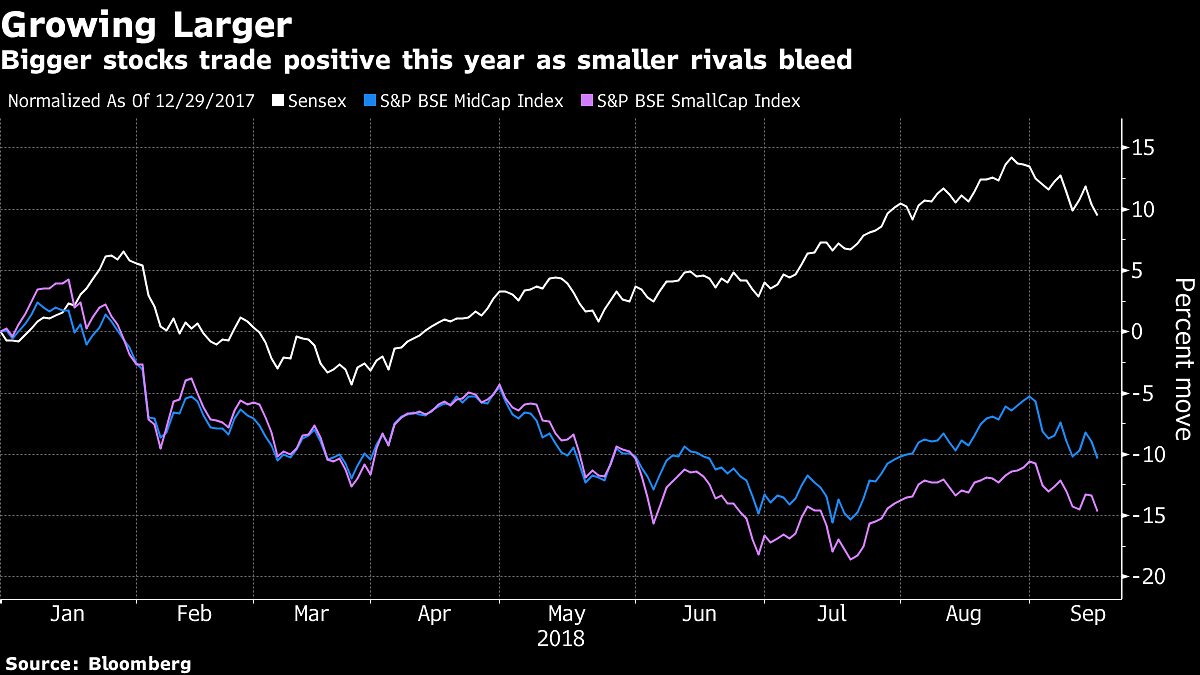A major opportunity for small caps may come around the general elections in May 2019 when large caps could underperform.
Mumbai: Even as India’s smaller stocks are headed for their worst year since 2011, investors still need them in their funds in order to beat the market, HDFC Securities Ltd. says.
“Mid- and small-caps will keep throwing up surprises in stock moves,” given their agility to adjust to change through restructuring and corporate actions, Deepak Jasani, HDFC Securities head of retail research, said in an interview. “An early investment in them offers an opportunity for long-term wealth creation,” he said.
Rising borrowing costs following the introduction of a nationwide sales tax last July, the withdrawal of high-denomination currency bills in 2016 and a slight slowdown in flows to local funds have led to underperformance by India’s smaller stocks this year. The S&P BSE Small Cap Index is down 15 percent in 2018 compared with a 9.5 percent gain for the benchmark S&P BSE Sensex Index.

“Large-cap stocks will give you steady returns — about 12 percent per year — but a mix with small- and mid-cap shares can fetch investors at least 18 percent returns annually,” Jasani said. HDFC Securities echoes London-based Ashburton Investments Ltd., which last month recommended buying Indian mid-caps for protection from trade wars and emerging market contagion from Turkey.
The next major opportunity for smaller shares may come around the general elections in May 2019, when large stocks may underperform, Jasani said. The analyst sees the NSE Nifty 50 Index dropping to 10,100 before or just after the elections amid investor concerns about global pressures as well as domestic issues such as ballooning deficits, the weakening rupee and bad loans.
Jasani said a retail investor should have an investment basket of 20 stocks, of which five should be businesses that one “firmly believes in long term,” with the remaining 15 churned according to cycles.
“Smart investors demand quality management, visibility in earnings and revenue growth, and low variability in profit margins, and they are willing to pay a premium for that,” he said. — Bloomberg






